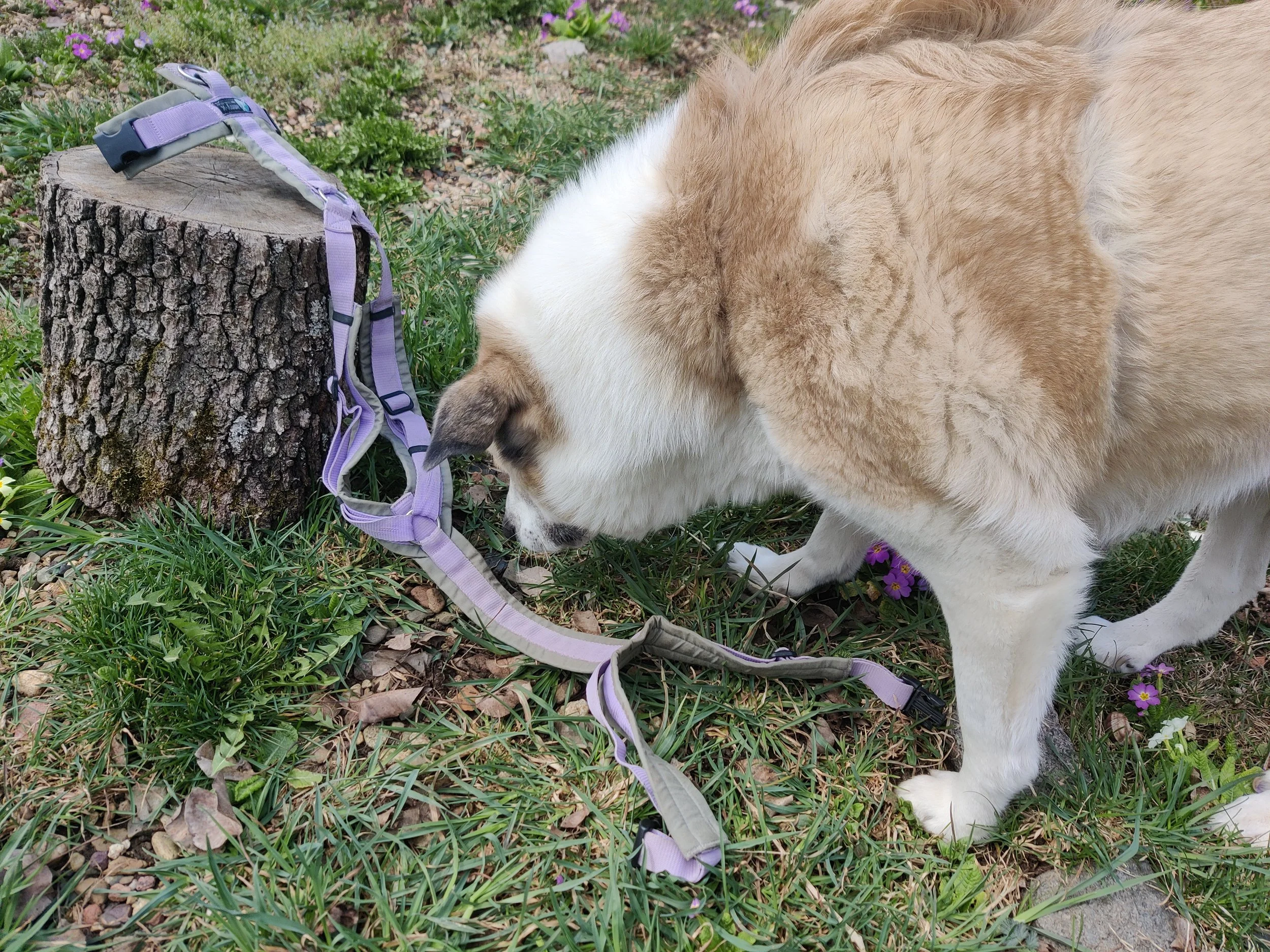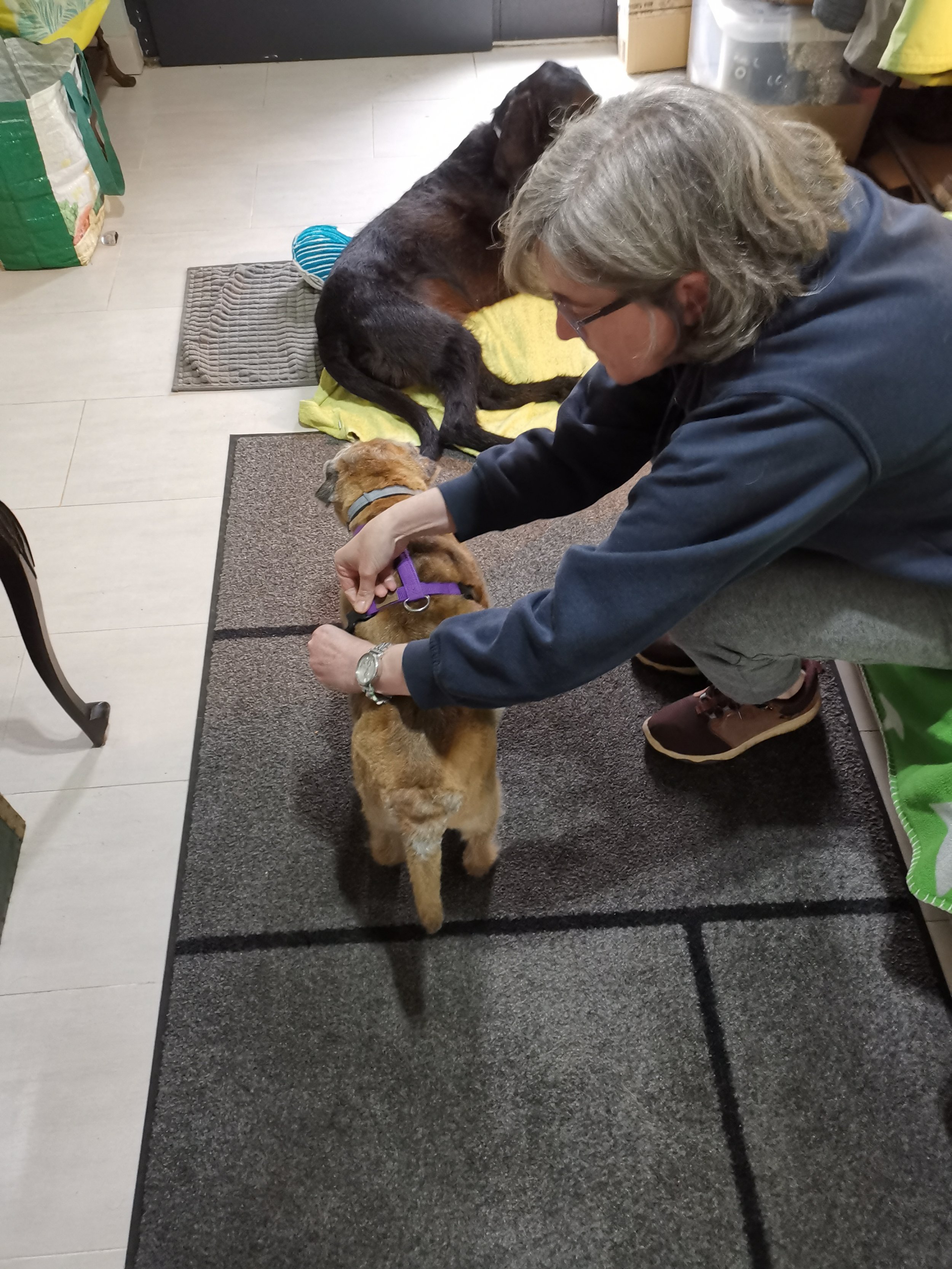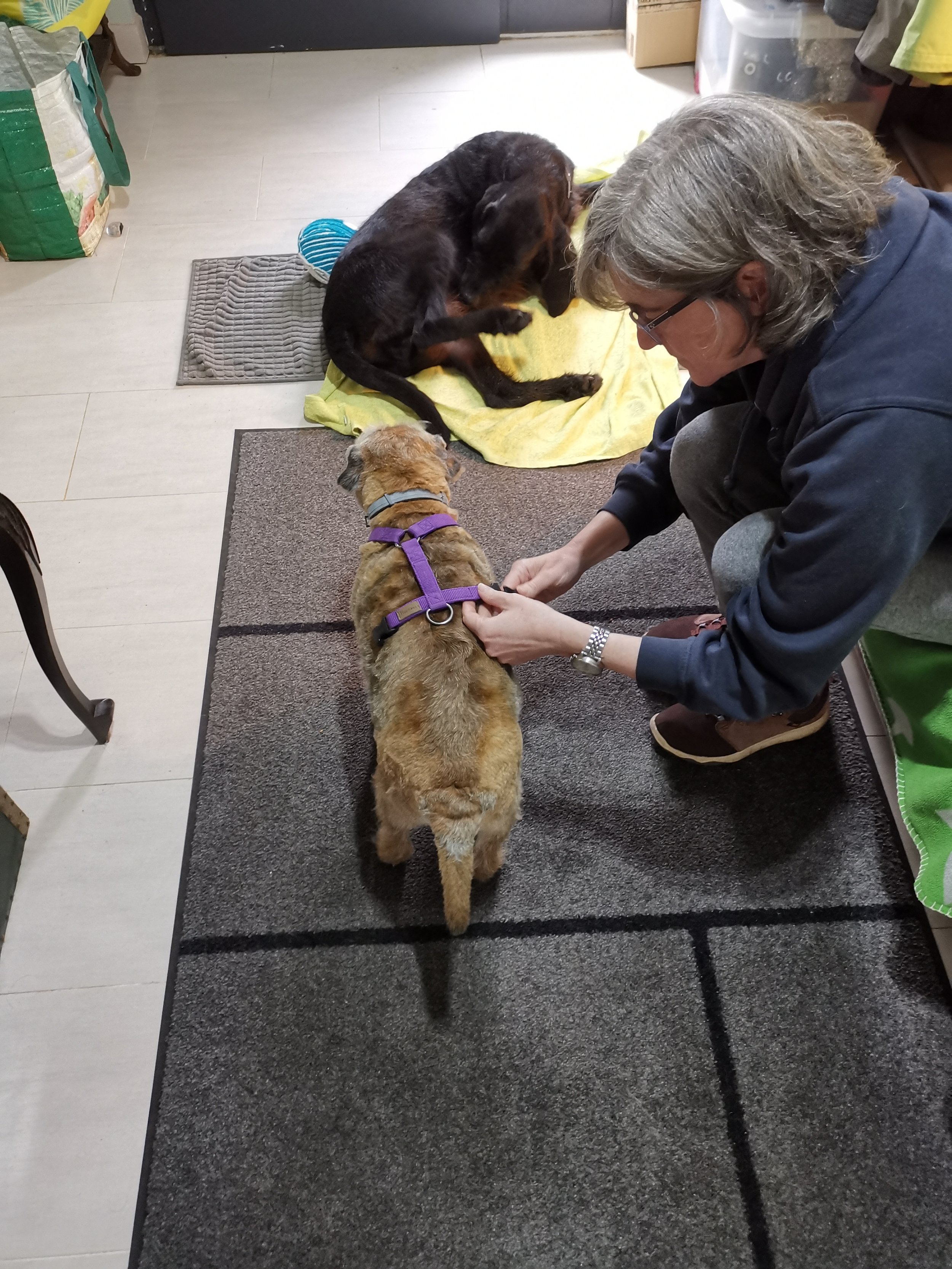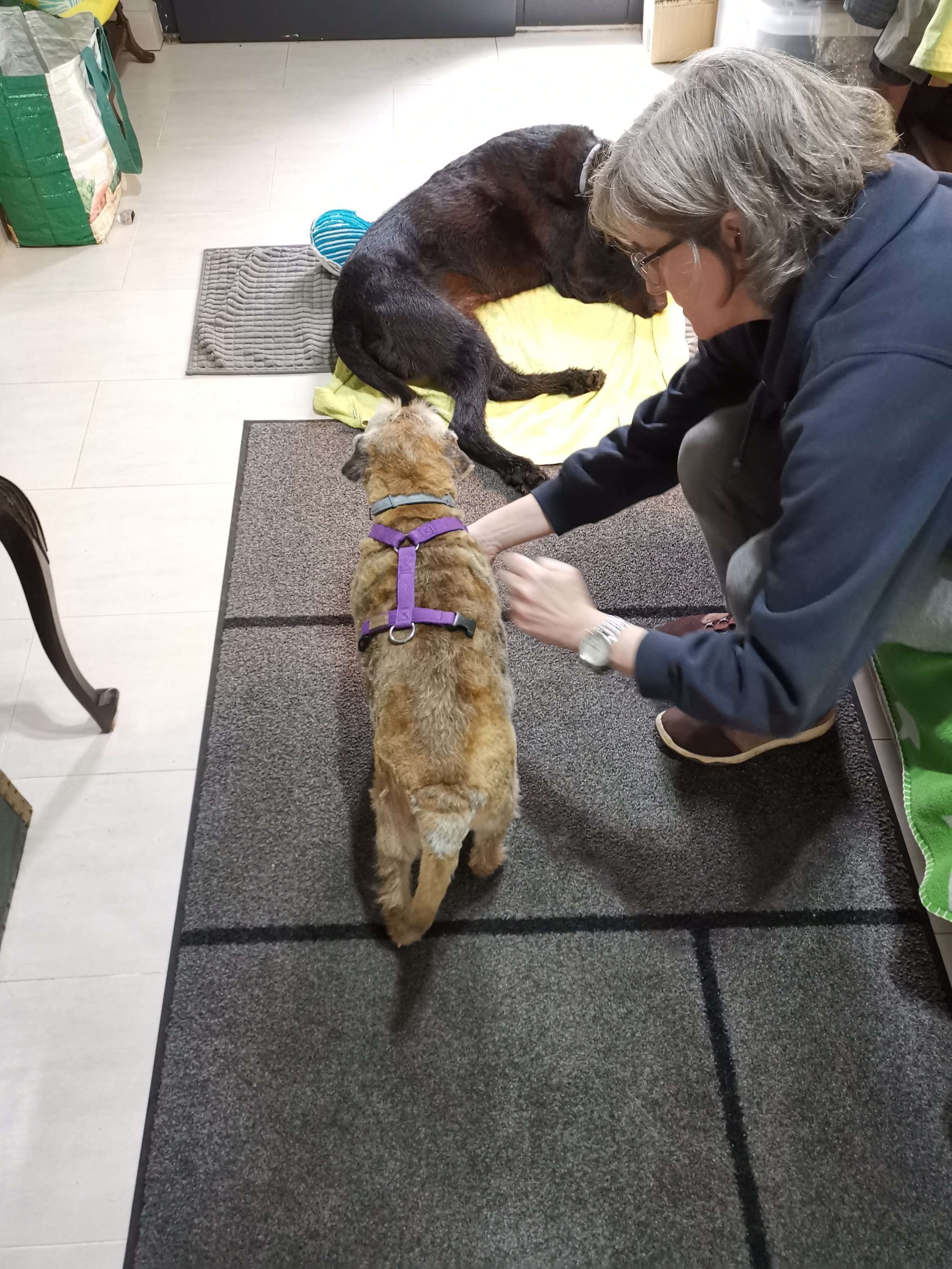How to introduce a harness
We often talk about the importance of using well-fitted comfortable H-harnesses for the walks with our dogs. However, recently one of our subscribers made us realise that we do not talk enough about introducing dogs to this important piece of equipment in a nice way, so that the dog is comfortable putting it on and wearing it.
As a matter of fact, we sometimes hear: "My dog absolutely hates the harness / my dog is so uncomfortable in the harness so we use a collar instead". Does it mean the collar is a better option for such dogs?
We argue it is not, since the collars can cause damage to the dogs' neck and organs located in the neck area (blood vessels, nerves, bones, glands and others), which can potentially compromise overall health and well-being of a dog.
So before blaming all the harnesses, let's first look at potential causes of the problem:
❓ Does the harness have the right shape? Is it fitted properly, so that the dog can move freely and comfortably? Is it made of quality materials that are not causing discomfort?
To learn about the right fit, please see this article.
❓ Is the dog healthy? Does the dog have any skin issues or is sensitive to touch overall? Does the noise of the clips scare your dog and the dog appears sound sensitive?
If you have any suspicions that something might be wrong, please address it with your veterinarian.
❓ Maybe the way you are putting the harness on is unpleasant for the dog?
❓ Or the first experience the dog had with the harness was not nice at all?
Now let's think about the last two scenarios in more detail.
First impressions matter a lot, and not just for us humans. A dog whose first experience with a harness was unpleasant might refuse to put it on or even wear the harness.
Thankfully, dogs are very clever and can learn to accept wearing a harness on their bodies. And we can help make the whole experience more pleasant for them. Here are a few tips on how to do that:
✅ Even before we try to put the harness on, it's a good idea to place the harness on a visible spot in the house. So that it becomes a common article for your puppy or older dog.
Heidi is checking out a new harness
✅ Choose a place with more space to put on the harness. Being in a larger space and having the possibility to move away feels safer.
For example, putting a harness on in a larger room is better than in a cramped entrance space.
✅ Pay attention to your body language. Dogs certainly do. Leaning over, grabbing them and sharp movements feel very unpleasant for most dogs. On the other hand, your slow movements and gentle touch feel much nicer. Sitting down with your side to the dog will also help her feel better.
This video we shared a while ago is a great example of the person using correct body language. Thank you Jenny for this video!
✅ If you are introducing the harness for the first time, do not rush. Allow the dog to see the harness, smell it , feel the touch of the harness on her skin, maybe eat a few tasty treats in the presence of the harness.
Show how the clips open and close, what sound they make.
Some more sensitive dogs will need several introductions. We want to appreciate and move in the pace of the dog.
✅ Then slowly and gently try putting the harness on, keeping in mind your body language. No rush, one bit at a time.
It might be a good idea to practice putting on the harness on a toy yourself a few times, since figuring out the construction of a harness can be tricky in the beginning and we want to avoid frustration near our dog.
If the harness has a loop that goes over the dog's head, being extra gentle and patient is a good idea, since something going over the head feels unpleasant for many dogs.
Look at Leti on the pictures below fitting a harness on her small sized dog:
✅ In case a dog already has negative feelings about putting on or wearing a harness, it's possible to re-introduce it. We shall start by addressing the factors that made it a problem before - choosing a different material, placement of clips on the harness, examining health, etc.
Introducing a new harness might make things easier, and we want to take things very slowly and at the dog's pace.
We hope that these tips are helpful and wishing you and your dogs to have wonderful walks on a Smiling Leash!





